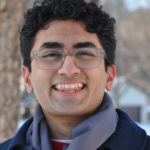
Akshay Naik
Akshay began doing research at the University of Minnesota as a high school student through MnSGC’s High-Altitude Ballooning Lab and the Small Satellite (CubeSat) Lab. Akshay originally started working on a project to develop a mathematical model of the relationship between the power produced by a solar cell and the altitude of a solar cell from the ground up into the stratosphere. As a student at the University of Minnesota studying computer engineering, Akshay joined the MURI team and assisted with various projects to measure particulate concentration at stratospheric altitudes. Akshay specifically worked on designing PCBs and configuring electrical circuits for the MURI team. Akshay has presented his work at various symposiums and conferences including the Undergraduate Research Symposium (Summer 2017, Spring 2018), the Minnesota Academy of Science (Spring 2018, Spring 2021), and the Academic High-Altitude (Ballooning) Conference (AHAC 2018) in Omaha, NE.
During the summer of 2021 Akshay worked for the MIT Haystack Observatory on the Mars Oxygen In-Situ Resource Utilization Experiment (MOXIE), a project aimed to produce oxygen from the Martian atmosphere. He is passionate about satellite propulsion and energy efficiency via renewable sources like solar panels.
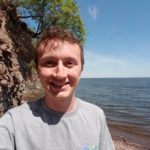
Alec Lovlein
Alec received his B.S. in Physics and Mathematics from the University of Minnesota Duluth in 2017. In addition to coursework, he spent three years performing research supported by MN Space Grant on neutrinos with the MINERνA collaboration - an experiment based at Fermilab. After graduation, Alec pursued a Ph.D. in Physics at the University of Utah. As of now, Alec works for a law firm in Minneapolis that does patents.
Asif Ally
Asif is a member of NASA’s Minnesota Space Grant High-Altitude Ballooning Team. He works on the University of Minnesota MURI Project where his main focus is developing a payload that aims to characterize the particulate content of the stratosphere. The particle data is accompanied by atmospheric data and GPS data collected from a full custom sensor suite.
Asif is a junior and plans to graduate with a bachelor's degree in Astrophysics with a minor in Computer Science from the University of Minnesota-Twin Cities. In addition to the MURI Project, Asif works on the UMN Small Satellite project where he assists the Attitude Determination and Control Systems team. Also, he is looking to get involved with the rocket team this coming semester.
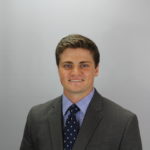
Austin Eiler
Austin Eiler is from the small town of Markesan, Wisconsin and graduated from the U of MN in 2018 with a Bachelor's degree in Aerospace Engineering and Mechanics with a minor in Astrophysics. Austin is interested in rocket propulsion and all things related to aviation. His time with the Minnesota Space Grant Consortium has taught him a lot about applying problem solving skills to real world problems, and how important it is to be able to think on the fly. He is currently working as a civilian engineer for the U.S. Navy in China Lake California.
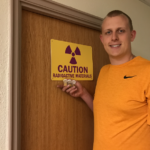
Austin Heins
Austin Heins is from Sioux Falls, SD, and is double major in Physics and Math at Concordia College. He was involved in a research project doing magnetic characterization of iron oxides during the summers of 2015 and 2016. Austin was also part of a team working with the quantum optics activity during the summer of 2017.
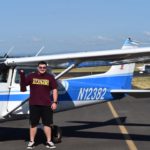
Austin Langford
Austin Langford is from Germantown, Wisconsin, and majored in Aerospace Engineering and Mechanics at the University of Minnesota – Twin Cities. During his time in school, he participated in high-power rocketry and stratospheric eclipse ballooning. Austin had a summer 2017 internship at NASA Langley but returned to Minnesota in time to rejoin the ballooning team for the eclipse trip in August of 2017. Since graduating, Austin has lived in Oregon working for Garmin developing flight displays and other avionics for general aviation aircraft. He has also completed a private pilot’s license in this time.
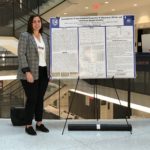
Bailey Klause
Bailey Klause is from Redwood Falls, MN, and majored in physics, with chemistry and math minors, at Concordia College in Moorhead. Bailey, in collaboration with Dr. Thelma Berquó, Andrew Middendorf, and Dr. Graeme Wyllie, worked on a project synthesizing samples of α-FeOOH (goethite) doped with Al, Ni, and Cr during the summer of 2019. Bailey and Andrew were also involved in the acquisition of magnetic data and characterization of the iron phases prepared in lab during fall 2019. During the summer of 2020, Bailey also worked on data analysis of the goethite doped samples.
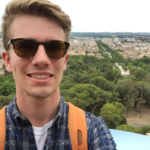
Ben Geadelmann
Ben graduated in May 2018 with a Bachelor's degree in Aerospace Engineering and Mechanics from the University of Minnesota – Twin Cities. He is originally from Adel, Iowa. Ben was an active member of the high-altitude (stratospheric) ballooning team from the fall of 2015 until he graduated. He was a co-lead for the total solar eclipse live-streaming project in the summer of 2017. His time with the ballooning team taught him the importance of planning for all possibilities and communicating clearly. He is currently a systems engineer at Honeywell Aerospace in the Twin Cities, developing avionics for civil aviation.
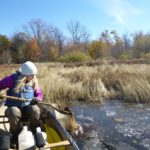
Breanna Keith
Breanna Keith is originally from Cloquet, Minnesota and is currently a Graduate Research Assistant at Bemidji State University and the Minnesota Department of Natural Resources. She is pursuing a master’s degree in environmental studies and her academic interests include wetland ecology, environmental toxicology, and natural resource management. Breanna’s proposed research aims to examine the presence of environmental contaminants in wetland sediments across Western Minnesota and the associated toxicological effects on freshwater amphipods Gammarus lacustris and Hyalella azteca.
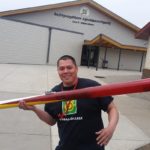
Christopher Stauffer
Chris Stauffer is from Cass Lake, MN and recently completed his STEM emphasis associates degree at Leech Lake Tribal College. He has participated in the high-powered rocketry program for three years, and with his help, the team won second place at the First Nation’s Launch twice. Chris has spent two summers working as a summer IT intern with the Leech Lake Band of Ojibwe, and will be working for them full time this year as an IT technician.
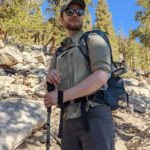
Daniel Toth
Danny graduated in 2019 with a bachelor's degree in Aerospace Engineering and Mechanics and a minor in Astrophysics. Originally from St. Louis Park, Minnesota, Danny was a member of the stratospheric ballooning team from the summer of 2016 until he graduated.
As part of the ballooning team, Danny worked on active balloon altitude control, flight termination systems, and a special virtual reality camera payload to film the 2017 solar eclipse. Danny had a great time working for the ballooning team, and learned a lot about integrated software development, fault-tolerant design, and how to bounce back when things don't go as planned!
Danny currently works as a Modeling and Simulation Engineer for Northrop Grumman.
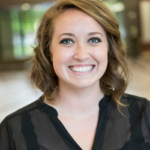
Elise Linna
Elise Linna graduated from Augsburg University in the spring of 2018 with a Bachelor’s of Science in Physics. During her time at Augsburg, Elise participated in various research opportunities and teaching assistantships thanks to the NASA Space Grant. These opportunities included research on Graphene Oxide, assisting in a modern physics lab, and leading a group of first year college students in a high-powered rocket launch. After graduation Elise secured employment as a project manager at Open Systems International where she develops, delivers, and integrates software products for their customers to run the electrical grid. Her various experiences in research, project management, and teaching equipped her with the skills to lead a team of technical experts on a project for a Fortune 100 company. "I believe that my success can be directly tied back to the opportunities I seized through the NASA Space Grant as these experiences have knocked down communication barriers on technical topics and enhanced my leadership qualities in a robust and well-rounded manner."
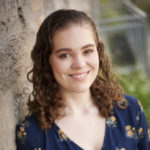
Emma Krieg
Emma is a former member of the U of MN - Twin Cities' Space Grant High-Altitude Ballooning Team and has worked on many different projects. Her of her main focus areas was experimenting with mock-CubeSats to fly on high-altitude balloon missions; she helped to design a mock-P-POD (the deployment method used in near-space to deploy mock-CubeSats) that can fly on a balloon stack and simulate an actual CubeSat deployment, exposing mock-CubeSats while still keeping them safely attached to the stack. The design allows actual CubeSats to be tested in near-space environments prior to being launched into space, where the designers can no longer retrieve their projects to make improvements. Emma also worked to improve ballooning programs that utilize weather data to predict the landing locations of balloon launches. She has also worked with different ballooning radio systems: the FreeWave radio, which beacons data from a balloon stack to a ground station, and an APRS iGate, which retrieves GPS data from the balloon stack and uplinks the location to the internet in real time. Emma has served as a team seamstress as well, helping to make multi-layer insulation "blankets" that aid payloads in retaining heat and reflecting excess solar energy. She has also been involved in many outreach programs for the MN Space Grant, including balloon launches, hovercraft activities, plus parachute activities with elementary and middle schools and the Eureka program on campus for high school girls interested in STEM careers.
Emma is a senior in the Aerospace Engineering and Mechanics Department at the University of Minnesota - Twin Cities. Along with her major in Aerospace Engineering and Mechanics, she is pursuing a minor in Astrophysics. Outside of her schoolwork and ballooning projects, she is also the lead of the Simulations subteam of the Minnesota Rocket Team and is involved in the University of Minnesota’s Society of Women in Engineering. She is highly interested in the exploration of space and, when she graduates, hopes to work on the mechanical design of satellites and probes that will further knowledge of the universe. In her free time, Emma enjoys reading (science fiction being one of her favorite genres), baking sugary desserts, hiking and camping, photography, and playing board games with her friends and family.
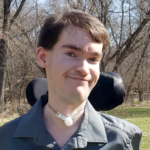
Ethan Och
Ethan Och is a Spring 2020 graduate of the Aerospace Engineering and Mechanics Department at the University of Minnesota in the Twin Cities. He is originally from Swanville, Minnesota, a small town and rural community in the central part of the state. In addition to his Bachelor's degree in Aerospace Engineering and Mechanics, he has minors in Astrophysics and Computer Science. He is currently employed as a Software Engineer with Northrop Grumman's Tactical Space Systems.
During his years as an undergraduate student at the University of Minnesota, Ethan was involved in a variety of STEM student groups and activities. This included the Minnesota Space Grant Consortium, where he was involved in web development and high-altitude ballooning. He was also active with the Small Satellite Research Lab, where he served as a documentation and outreach team lead, contributing to the development and launch of the University of Minnesota's first CubeSat. In the time since graduation, he has joined the Planetary Society, the Experimental Aircraft Association, and the American Institute of Aeronautics and Astronautics.
As a member of the American Institute of Aeronautics and Astronautics, Ethan has been involved with the Diversity Working Group and its K-12 STEM Outreach Diversity Subcommittee, where he advocates for diversity and inclusion in the aerospace industry as well as increased opportunities for young people to get involved in the wide world of STEM. He has a passion for STEM education, and hopes to inspire young people to pursue STEM careers by telling his story and sharing his experiences in the aerospace field.
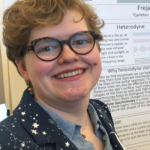
Freja Olsen
Freja Olsen is from St. Louis Park, Minnesota, and majored in physics at Carleton College. Freja, in collaboration with Adam Ickler and Dr. Ryan Terrien, worked on a project to refine techniques for the measurement of atomic absorption lines in the spectra of low-mass stars during the summer of 2020. She led the development of a continuum normalization method that allows for consistent determination of the strengths of these features in the presence of varying atmospheric and telescopic throughput. After graduating Freja plans to continue studying physics in graduate school. In her free time, Freja enjoys reading and needlework.
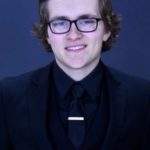
Gabe Holum
Gabe Holum is a senior physics and mathematics double major at Concordia College and is from Grand Rapids, MN. He is also the president of Concordia College’s Society of Physics Students chapter. During the summer of 2020, Gabe was involved in a project on machine learning. In collaboration with Dr. Luiz Manzoni, he studied the literature and investigated the applications of machine learning to physics. In the summer of 2021, under the direction of Dr. Prisca Cushman, he is working on a project regarding detector calibration for the Super Cryogenic Dark Matter Search at the University of Minnesota-Twin Cities. This year (2021-2022) he is serving as the TA for the MnSGC's GLEAM Lunar Robotics intercollegiate challenge. After undergraduate studies, he plans on attending graduate school in either physics or aerospace engineering. He hopes to eventually work on rockets or satellites.
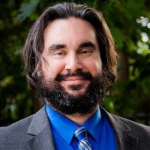
Jack Stutler
As an undergraduate, Jack was a member of NASA's Minnesota Space Grant High-Altitude Ballooning Team. His primary focus was developing a low-cost particulate measuring payload to characterize the particulate content of the atmosphere around 100,000 ft altitude. He also wrote a program to parse APRS data logs from balloon flights and a sensor suite library to streamline the microcontroller coding process.
Jack graduated with a bachelor’s degree in Aerospace Engineering & Mechanics with a minor in Physics from the University of Minnesota - Twin Cities in December of 2019. He now works as an application developer for Barrios Technology, an on-site contractor at NASA's Johnson Space Center in Houston.
Jacob Meyer
Jacob J. Meyer is one of the newest members of the NASA Space Grant Ballooning team at the University of Minnesota. He got involved with the ballooning team in May and graduated from Farmington High School in June of 2018. He primarily specializes in configuring radios for inflight operations, and is also leading and assisting many other projects, such as the team’s new social media platforms. He also gets involved in as many outreach events as he can since he believes strongly in the benefits of space science and exploration.
Prior to being on the ballooning team, Jacob spent his junior and senior years as a full-time PSEO student at the University of Minnesota. Along with his rigorous classes, he also started on Farmington High’s varsity football team, tied a school record in weightlifting, lifted a lot, and participated in other, more minor high school activities.
Once he formally arrives on campus this fall, he plans to get involved with the Rocket Team, MURI, Theta Chi, the entrepreneurship club, and professional engineering organizations (such as the American Institute of Aeronautics and Astronautics). He plans to start his own aerospace company around the time he’s 30.
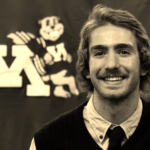
Joey Habeck
Joey Habeck is a former member of NASA's Minnesota Space Grant High-Altitude Ballooning Team, where he focused on stratospheric aerosol measurements. His Ph.D. dissertation work involved utilizing these data as inputs to simulations of hypersonic flows to study particle-induced boundary layer transition and vehicle surface damage.
Joey earned his bachelor's (2018), master's (2022), and doctoral (2023) degrees from the Department of Aerospace Engineering and Mechanics at the University of Minnesota - Twin Cities. He is currently a staff member at The Johns Hopkins University Applied Physics Laboratory in Laurel, MD, where he works as an aerothermal engineer focusing on hypersonic aerothermodynamics research.
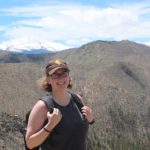
Jordan Bartlett
Jordan graduated in the spring of 2020 from the University of Minnesota with a bachelor’s degree in astrophysics and minors in physics and English. During her time in undergrad, she was a member of the High-Altitude Ballooning Team and worked mostly on developing a mock-cubesats for the team. She currently is a graduate student at the University of Wyoming pursuing a Ph.D. in astronomy, and she is beginning research into binary star systems using data from the Wyoming Infrared Observatory.
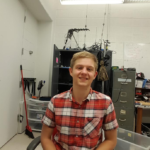
Josh Nelson
Josh Nelson is from Centerville, Minnesota, and majored in Aerospace Engineering and Mechanics at the University of Minnesota - Twin Cities. He was active with both High-Altitude Ballooning Team and the Rocket Team at the U of M throughout his undergraduate career. He now works as a systems engineer at Boeing, supporting interface control for a fleet of aircraft and participating in the advanced programs team that applies developing technologies to engineering problems.
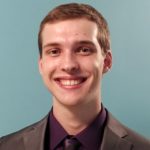
Kei Heltemes
Kei is a current student Augsburg University, double-majoring in Chemistry (ACS-approved) and Physics, and minoring in Mathematics. He is also the president of both the Society of Physics Students (SPS) and the Augsburg Chemistry Society (ACS). He has participated in several different research projects in various disciplines. In the summer of his sophomore year, Kei worked with Augsburg professor, Dr. Jeff Walter, in his Ph.D. advisor’s laboratory in the chemical engineering and materials science (CEMS) department at the University of Minnesota-Twin Cities (UMN). In their work, they successfully, and controllably induced a ferromagnetic state in originally diamagnetic pyrite iron disulfide by applying a voltage to pyrite single crystals, which has potential applications in developing next-generation electronic devices that strive to achieve increased performance without increasing transistor count. Having interests in materials science and engineering led Kei to apply to the NASA space grant for additional undergraduate funding, helping him fund his research. Being unable to work in the laboratory the summer after his junior year due to COVID-19, Kei was tasked with repairing the Augsburg physics department’s CNC machine. His earlier work with Dr. Walter led to his decision to pursue a Ph.D. in materials science. He aspires to either work in industry or a national lab with the hopes to continue similar fundamental research on materials capable of revolutionizing the way that inefficient or unsustainable processes are performed.
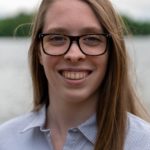
Kyle Fraser-Mines
Kyle Fraser-Mines majored in physics at Carleton College and is from Tyngsborough, Massachusetts. During the summer of 2020, she worked with Dr. Cindy Blaha on a project to determine the luminosity functions of HII regions in galaxies and dwarf galaxies in the local group. She also created stacked emission line images for these galaxies. In addition to research, Kyle also worked with local Girl Scouts to lead an activity building a baking soda and vinegar rockets. After graduating from Carleton, Kyle planned to join the Peace Corps. In her free time she enjoys practicing with the swim team and playing water polo.
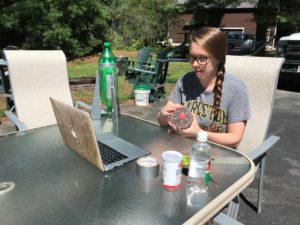
Kyle making rockets with Girl Scouts in Massachusetts during Summer 2020
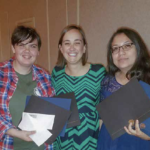
Magaly Perez
Magaly Perez (on the far right in the photo - Macalester class of 2014) was supported for two consecutive summers by the MnSGC. She worked on a project with co-PI R. Rogers that focused on the preservation of tiny vertebrate fossils in ancient Cretaceous rocks in Montana. Magaly recently completed her master’s degree in the Department of Earth and Environmental Sciences at Fresno State University. Next she is planning to complete a teaching certificate then hopes to start teaching STEM topics at the high school level.
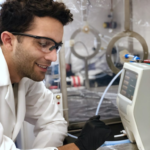
Mike Alves
Mike Alves in an alumnus of Augsburg University, where he studied Chemistry. In 2015, he researched human breath using mass spectrometric techniques, looking for and successfully identifying major breath compounds that are biomarkers for bodily processes. Currently, he is at the University of California-San Diego pursuing a PhD in Analytical and Atmospheric Chemistry, funded for three years by the prestigious National Science Foundation Graduate Research Fellowship. Alves works on climate-related studies as well as indoor air chemistry. His project looks at humans’ impact on the surfaces and breathable air, and the effects those impacts might bring. While at Augsburg, Alves was the recipient of Minnesota Space Grant scholarships to support his education.
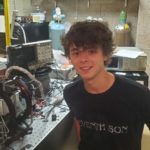
River Beard
River Beard is a physics student at Bethel University. River is driven to learn how the universe works and wants to use science and engineering to improve the lives of individuals and societies. River is researching the 5S – 5D two-photon transition in Rubidium as an optical frequency standard. The frequency standard can be deployed in the field for applications such as atomic clocks on GPS satellites because the two-photon absorption eliminates the first-order Doppler shift and the need for laboratory-bound laser cooling apparatuses. The 778nm wavelength of the interrogating light allows for greater precision than commonly used microwave transitions. At Bethel University, they are studying geometric solutions, along with varied polarization-states of interrogating light, to reduce the AC-Stark shift in the interest of long-term clock stability, while keeping quantum shot-noise at a minimum in the interest of short-term clock stability.
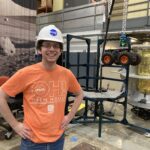
Ryan Bowers
Originally from Buffalo, MN, Ryan Bowers graduated from the University of Minnesota - Twin Cities in 2019 with a bachelor's degree in Aerospace Engineering and Mechanics. He participated in multiple MnSGC projects, including high-power rocketry and stratospheric ballooning. During his tenure he helped develop payloads for the solar eclipse in 2017 and maintained many of the ballooning team's software libraries. He was also the recipient of multiple MnSGC-sponsored internships at NASA Langley Research Center, where he now works as a contractor for the agency. Ryan currently supports the Autonomous Integrated Systems Research Branch in developing software for robots, UAVs, satellites, and similar systems that operate with limited human oversight.
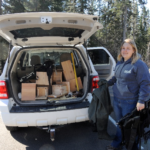
Sadie Libal
Sadie Libal is from Two Harbors, MN, and defended her Environmental Studies masters thesis at Bemidji State University during the summer of 2017. Her project looked at mercury accumulation in aquatic tree swallow food web of Grand Portage National Monument and how surface water sulfate concentration influences Hg accumulation. Mercury accumulation in Grand Portage was similar to other national parks in the region and sulfate concentrations were highest in the bog and deep marsh and the remaining wetlands had significantly lower and less variable sulfate concentrations.
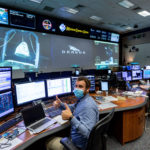
Sawyer Mitchell
I graduated in May 2017 with a bachelor's degree in Aerospace Engineering and Mechanics from the University. I am from Fond du Lac, Wisconsin, and have since moved to Houston, Texas, for work.
I worked for a summer in 2016 as a member of the high-altitude ballooning team. My work with the ballooning team provided me with an excellent experience in operations from payload and systems design, to flight prep and launch, and recovery.
I am currently an Attitude Determination and Control Officer (ADCO) and work in mission control for the International Space Station (ISS) at NASA's Johnson Space Center where I help to plan missions, train astronauts and flight controllers, and execute the missions to the ISS.
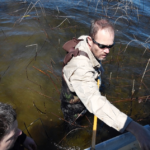
Steven Hauschildt
Steven Hauschildt is from Millville, Minnesota, and worked on a masters degree in aquatic biology at Bemidji State University. His project looked at perch growth from hatch through the first several weeks of development and how human inputs to surface water influences this development.
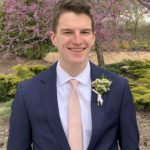
Thomas Fehr
Thomas worked with the MnSGC’s High-Altitude Ballooning Team at the U of MN – Twin Cities in the spring and summer of 2018. His work had an emphasis on camera systems in a high-altitude environment, focusing on optimizing video quality, memory capabilities, battery life, and post-flight of various small cameras. Through his lab work, he became proficient in the handling and operation of GoPro Session, Lightdow LD4000, and Garmin VIRB 360 cameras and continues to explore methods to make footage more suitable to view in a VR format. Thomas has also performed research into the implementation of multi-layer insulation on the Alphasense particle detector, as part of the MURI research project. In addition, Thomas has helped with various other projects such as working with FreeWave radios, constructing an early iteration of the MURI active heating system, and participating in numerous MnSGC outreach events with pre-college students.
Thomas graduated from the University of Minnesota in the spring of 2021 with a major in Aerospace Engineering and Mechanics and minors in Astrophysics and Computer Science. After his time with the ballooning lab, he was a research assistant for the University of Minnesota UAV (Uninhabited Aerial Vehicle) lab and gained internship experience with Progeny Systems Corporation in Virginia as well as with Collins Aerospace. Then he moved to St. Louis to work as an Airworthiness Engineer with Boeing.